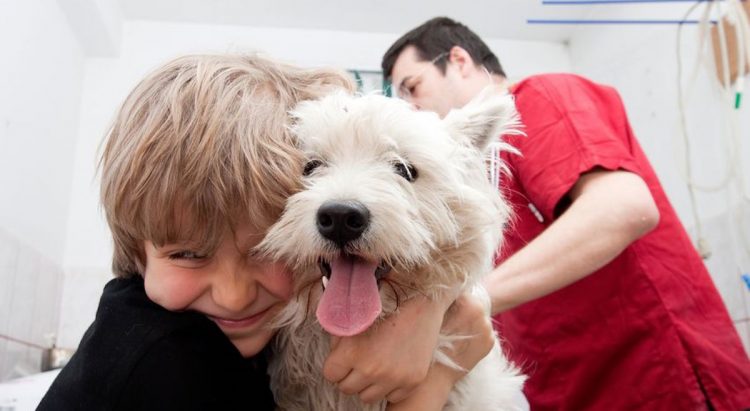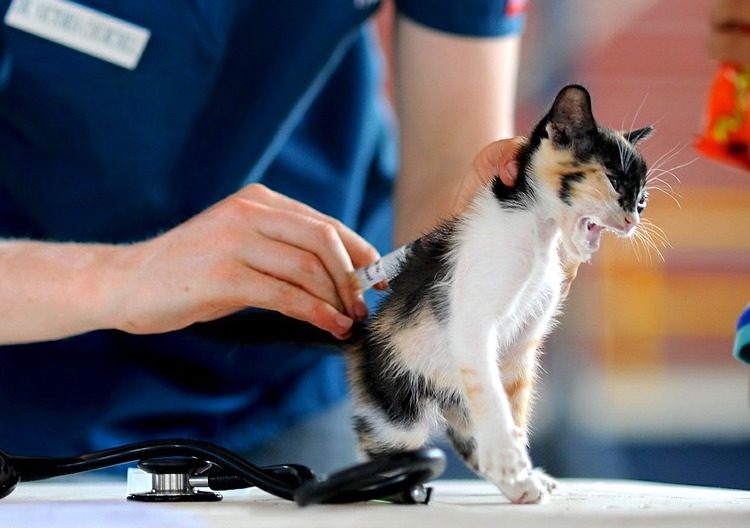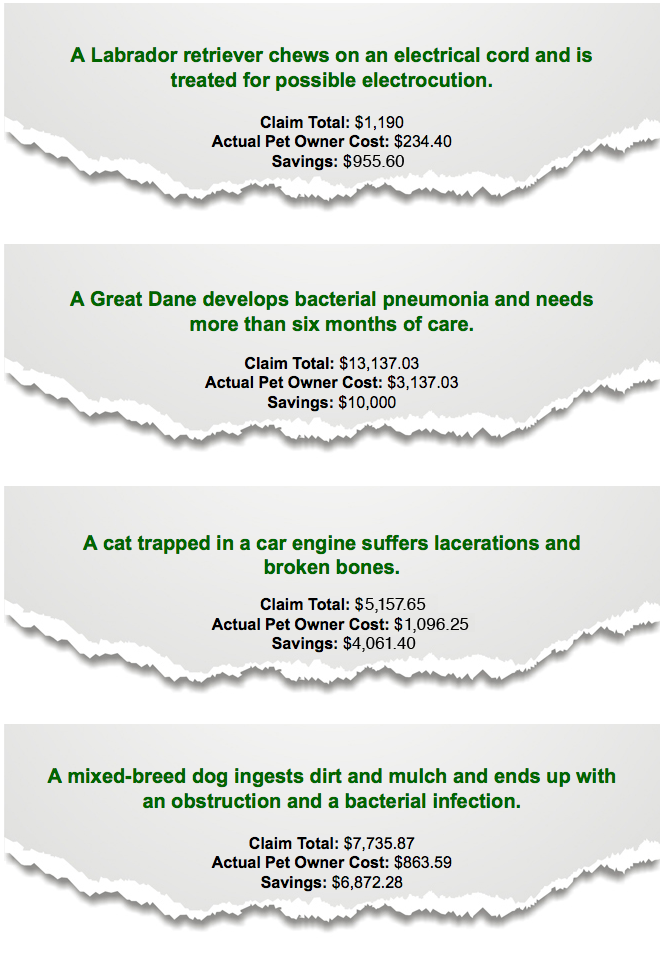
This pet health content answers the question “Is Pet Insurance Worth It” and was reviewed for accuracy by a veterinarian. It was last reviewed and updated on July 5, 2024
If you have questions or concerns, call your vet, who is best equipped to ensure the health and well-being of your pet. This article is for informational purposes only and is not a substitute for professional medical advice, diagnosis, or treatment. See additional information.

- Is Pet Insurance Worth It? Understanding Coverage and Providers
- Is Pet Insurance Worth It? Debunking Common Myths
- Is Pet Insurance Worth It? Why You Need to Get Pet Insurance
- Is Pet Insurance Worth It? Pros and Cons
- Is Pet Insurance Worth It? Addressing Consumer Group Concerns
- You Can’t Predict the Cost of Veterinary Care
- Understanding Catastrophic Coverage and Cost-Saving Tips
- What About CareCredit?
- Exploring Pet Insurance for Exotic Pets
- Is Pet Insurance Worth It? Conclusion (H2)
- References
Is Pet Insurance Worth It? Understanding Coverage and Providers
Should you get pet insurance? The simple answer is yes — but what kind of coverage and from which company?
Choosing the Right Pet Insurance
The correct policy for your needs from a reputable pet insurance provider should:
- Help you with your veterinary bills
- Provide better medical care for your pet
- Not make you insurance-poor in the long run
There are huge differences among policies and companies.
Veterinarians and Pet Insurance Companies
Before we lay out the facts, definitely keep the following in mind: Your veterinarian very likely has a love/hate relationship with pet insurance companies.
- Vets sometimes find themselves fighting with pet insurance companies over denied claims for their patients. This happens even with the top-rated insurance providers.
- Good vets will go to bat for you, demanding second and third reviews of denied claims that they believe are valid.
Is pet insurance worth it? Understanding these dynamics can help you navigate the complex landscape of pet insurance and make an informed decision.
Is Pet Insurance Worth It? Debunking Common Myths
Myth 1: “It costs too much.”
Not true. You can get basic coverage of your pet for a low monthly payment.
Myth 2: “But my pet isn’t sick.”
Not relevant. All pets risk having an accident or coming down with an illness. It isn’t a matter of if they will become hurt or sick — it’s a matter of when. The best time to get pet insurance is when your pet is healthy and young.
Myth 3: “It’s a big hassle.”
Not usually true. Many companies offer a 1-page downloadable claim form. Fill it out, email it back and get reimbursed quickly.
How to File a Pet Insurance Claim
Filing a pet insurance claim can be straightforward if you know the steps involved. Here’s a general guide:
- Visit Your Vet: Take your pet to the veterinarian for treatment and pay the bill upfront.
- Collect Documentation: Gather all necessary documents, including the vet’s invoice, medical records, and any other required forms.
- Fill Out the Claim Form: Complete the claim form provided by your insurance company. This can usually be done online or via a paper form.
- Submit Your Claim: Submit the claim form along with the supporting documents to your insurance provider. This can typically be done through their website, email, or by mail.
- Wait for Reimbursement: The insurance company will review your claim and process it. Reimbursement times can vary, so check with your provider for specific timelines.

Is Pet Insurance Worth It? Why You Need to Get Pet Insurance
The Importance of Pet Insurance
Dr. Phil Zeltzman, DVM, DACVS, CVJ, a veterinary surgeon, states that not getting pet insurance is “one of the biggest mistakes” people with pets can ever make. Pet insurance provides peace of mind, knowing you can afford life-saving care if your pet needs it.
Insuring Young Pets
- Young pets are generally healthy with no pre-existing conditions. Insuring your pet at an early age ensures coverage before any conditions develop.
- Rates increase with age. Even if your middle-aged pet has been healthy, your rate will increase as your pet ages, leading to higher premiums.
Example of Premium Increases Over Time
- Puppy in Washington DC: $35/month
- At 8 years old: $83/month
- At 12 years old: $149/month
If a dog lives to 13, the lifetime pet insurance cost would be $11,172, excluding other medical costs like wellness care, deductibles, elective procedures, and denied claims.
Rate Increases and Policy Considerations
- Nationwide, AKC Pet Insurance, PetPartners, ASPCA Pet Health Insurance, Hartville Pet Insurance, Embrace Pet Insurance, Figo, and PetPlan raise rates with age.
- Healthy Paws Pet Insurance and Trupanion do not raise rates based on the pet’s age.
These are important factors to consider when choosing pet insurance.

Is Pet Insurance Worth It? Pros and Cons
Pros and Cons of Pet Insurance
Policies vary widely. Some are all-inclusive, while others offer limited coverage or exclude many conditions or treatments.
Advantages
- One emergency could far exceed the premium costs.
- Some policies offer reduced costs for routine procedures, vaccinations, and annual exams.
- There are a variety of companies to choose from for insurance, allowing for plenty of options to suit your needs.
- Some plans will allow you to go to any veterinarian, not just use their network.
- Benefits may cover expensive therapies, which could be the difference between euthanasia and giving you more time with your pet.
- Some plans offer riders for additional coverage such as dental care or accidental death.
- Some plans will even cover boarding fees for your pet in the event that you are hospitalized.
- You can have peace of mind knowing that care will be provided for your pet without incurring debt in the thousands.
Disadvantages
- Pre-existing conditions may be excluded.
- Coverage may be limited by age, or more expensive.
- Some policies require you to use their network of vets, or you might have to pay an out-of-network fee or rate.
- Early cancellation fees apply on some policies.
- Certain policies may cover only emergencies or accidents.
- Benefits may be paid as a reimbursement after the vet visit, which requires you to pay at the time of service.
- Premiums may exceed your current veterinary costs.
- Breed-specific conditions may be excluded.
- Long-term care may be limited or have a maximum.
- Having coverage for multiple pets can get expensive unless the policy offers a multi-pet discount.
It’s important to review an insurance policy thoroughly so you know what your premiums cover and to ensure it meets your specific needs.

Is Pet Insurance Worth It? Addressing Consumer Group Concerns
Consumer Groups Question the Value of Pet Insurance
Consumers’ Checkbook, an independent consumer group, recommends shopping around for a more reasonably priced veterinarian instead of buying pet insurance.
Was YOUR Pet Food Recalled?
Check Now: Blue Buffalo • Science Diet • Purina • Wellness • 4health • Canine Carry Outs • Friskies • Taste of the Wild • See 200+ more brands…

While it’s true that veterinary service prices vary widely from practice to practice, and price does not always dictate quality of care, it’s impossible to get a reliable estimate for a “what if” veterinary scenario in advance.
You can compare prices for routine services, such as:
- Exam charges
- Vaccination pricing
- Spay and neuter procedures
However, comparison shopping is less effective when your pet gets sick, is in an accident, or needs surgery (needs surgery). No advance research will really help you determine how much treatment will cost in these unpredictable situations.
Is pet insurance worth it? This is an essential consideration when making decisions about your pet’s health care and financial planning.
Comparing Top Pet Insurance Providers
When choosing a pet insurance provider, it’s essential to compare the top options available to ensure you get the best coverage for your pet. Here are some key factors to consider:
- Coverage Options: Look for comprehensive coverage that includes accidents, illnesses, and wellness care. Some providers offer additional riders for dental care or alternative therapies.
- Cost: Compare premiums, deductibles, and reimbursement rates. Remember that the cheapest policy may not always provide the best value.
- Customer Service: Check reviews and ratings to gauge the provider’s customer service quality. Good customer service can make the claims process smoother and less stressful.
- Claim Process: Evaluate how easy it is to file a claim and how quickly reimbursements are processed. Some companies offer direct payments to vets, while others require you to pay upfront and get reimbursed later.
- Network: Some providers allow you to use any licensed veterinarian, while others have a network of approved vets. Ensure your preferred vet is covered.
You Can’t Predict the Cost of Veterinary Care
Common sense tells you that you can’t predict if your pet will become very sick or suffer an accident in the coming year. That’s what insurance is for.
Understanding how veterinary medicine works today will also show you that you can’t predict the cost of veterinary care for any problem out of the ordinary. Here’s why:
- Different treatment approaches: Different vets, even in the same practice, may not work up a case the same way. A common problem, such as an ear infection or a urinary tract infection, could be treated very differently, and the bill could range from $100 to $300.
- Complex conditions: A “simple” case of vomiting and/or diarrhea may turn out to be more complicated. Some pets recover from a GI upset with outpatient care, but others may need GI surgery or treatment for a serious illness like pancreatitis. Your vet has to give you a wide-ranging estimate, from hundreds to thousands of dollars, depending on how your pet’s illness progresses.
- Specialist care: Referrals and recommendations to specialists or referral practices are becoming the standard of care, as well as after-hour and emergency care. Even if your vet has reasonable fees, most people with pets end up at a specialist or in an emergency hospital several times throughout a pet’s life. These will be hefty bills and won’t reflect the pricing at your regular vet’s office.
Is pet insurance worth it? Given the unpredictable nature of veterinary care costs, insurance can provide a financial safety net for unexpected expenses.
Understanding Catastrophic Coverage and Cost-Saving Tips
Catastrophic Coverage
Consider a pet insurance policy that covers chronic or serious medical conditions, illnesses, or accidents. If you are insured, you will be able to get your pet advanced care at a significant savings.
- Many people can afford a monthly, reasonable charge for pet insurance but could not come up with many hundreds or thousands for an unexpected pet catastrophe. Pet insurance is a godsend in these situations.
- It is recommended not to get accident coverage alone. Treatment for medical or surgical conditions can be just as expensive as treatment for a hit-by-car injury.
Avoid the Bells & Whistles — Save Money on Pet Insurance
Paying out of pocket for your pet’s wellness, preventive, or elective procedures will probably save you money in the long run. Full-coverage pet insurance policies are often overpriced.
- You will also save money on your premium if you choose a high deductible, just like for your own health coverage.
- Have a heart-to-heart talk with yourself and your bank account. Do you have $5,000 set aside for your deductible if your pet faces treatment or surgery costing $10,000? Or do you need to choose a lower deductible and pay a higher monthly premium?
Is pet insurance worth it? Balancing the type of coverage you choose and understanding your financial capabilities can help you make the best decision for your pet’s health and your budget.
Pet Insurance Checklist
Checking out all the fine print of pet insurance policies can be daunting. Here’s a streamlined checklist of key points to consider before signing a policy:
- Veterinarian Choice: Can you use your own vet, or are you restricted to a network?
- Older Pets: Are there increased premiums, lower coverage rates, or age limits?
- Cancellation Fees: Are there fees for canceling the policy?
- Pre-existing Conditions: Are these conditions covered?
- Co-payment/Reimbursement: What are the rates?
- Coverage: What services and treatments are covered (e.g., emergencies, annual visits, vaccinations)?
- Exclusions: Are there any?
- Customization: Can you add or remove services as needed?
- Trial Period: Is there a money-back guarantee (e.g., 30 days)?
- Pre-authorization: Is it required for visits or emergencies?
- Travel Coverage: What services are available when you’re out of town?
- Breed Exclusions: Are any breeds or animal types excluded?
- Special Coverage: Does the policy cover pregnancy, spaying, or neutering?
- Deductible: Is there one to meet?
- Annual Maximum: Is there a limit, and do claims affect the total?
- Diet Exclusions: Are pets excluded because of their diet (e.g., raw diets)?
- Discounts: Are there discounts for multiple pets or military members?
- Annual Exams: Are they required to keep coverage?
- Reviews: Does the company have positive, unbiased reviews?
Consider your current annual costs compared to the annual premiums to be aware of the difference — or increase — in your expenses. Although cost is a typical factor, consider upcoming expenses for older pets or illnesses that may become more severe in the coming years.
Evaluating Pet Insurance Plans: What to Look For
When evaluating pet insurance plans, it’s crucial to consider several factors to ensure you choose the right one for your pet’s needs:
- Coverage Limits: Check for annual, per-incident, and lifetime coverage limits. Higher limits provide better protection against costly treatments.
- Exclusions: Be aware of any exclusions in the policy, such as pre-existing conditions, hereditary disorders, or specific breeds.
- Reimbursement Model: Understand the reimbursement model—some plans pay a percentage of the vet bill, while others have set benefit schedules.
- Deductibles: Determine if the deductible is annual or per incident. Annual deductibles can be more cost-effective if your pet has multiple health issues.
- Flexibility: Look for plans that offer customizable coverage options, allowing you to add or remove services as needed.
Real Claims and Insurance Reimbursements
Sometimes it’s hard to imagine what your dog or cat might get into or what illnesses they may suffer later in life. Even harder can be figuring out how your insurance company will help you when it comes to paying the bill.
The following examples are taken from actual claims covered and paid by pet insurance:

What About CareCredit?
CareCredit may sound like pet insurance, but it’s quite different.
- Pet insurance: You pay a premium every month and have coverage in case your pet has a major medical expense.
- CareCredit: A line of credit that can be used to cover costs that pet insurance doesn’t cover, and can also be used for your own health expenses.
Think of CareCredit as a Visa card that is accepted only at medical or veterinary facilities. You could use it for eye surgery and then use it to pay for your pet’s flea medicine at the vet’s office. However, CareCredit cannot be used at the grocery store; it’s just for medical expenses.
What CareCredit Covers
- Medical expenses: Supplies, bills, cosmetic surgery, and so forth.
- Terms and financing: Options range from 3 months to 2 years to pay off the balance with no interest.
Unlike pet insurance, you are eventually responsible for the full balance of your purchase. If you don’t pay off the balance within the specified timeframe, you’ll be hit with interest charges on the original balance.
Just like any credit card, you have to pay at least the minimum monthly balance to keep your account in good standing, and this line of credit will affect your credit report.
Advantages of CareCredit
- Covers everything medically as long as your healthcare provider or veterinarian accepts it.
- Can be used for cosmetic, surgical, equipment, and medication expenses.
- Allows you to pay a large sum of money for a procedure and then pay it off in increments.
- Covers medical and veterinary expenses for both you and your pet.
Disadvantages of CareCredit
- Interest rate depends on your credit score. Late payments will impact your credit report.
- If you don’t pay off the balance in full within the term period, you will be charged interest on the original payment amount.
- CareCredit functions similarly to any other credit card with interest, fees, and a credit limit. The only difference is the special term length with no interest, and purchases are limited to medical needs.

Exploring Pet Insurance for Exotic Pets
What About Pet Insurance for Exotic Pets?
For exotic pets, vet bills may be higher because they often require extra or specialized care compared to the average cat or dog. Pet insurance plans for exotic pets vary in cost, depending on factors like species, age, and pre-existing conditions.
- Average costs: Nationwide reports the average cost to cover an exotic pet is around $9 per month. Birds average $15.75 per month, reptiles $8 per month, and dogs $38.58 per month.
Here’s a more detailed sampling of exotic pet coverages:
Nationwide Pet Insurance
- Coverage: Nationwide covers dogs, cats, some birds, and many exotics, including birds, ferrets, hedgehogs, potbellied pigs, snakes, and more.
- Services covered: Accidents and illnesses, examinations, lab fees, prescriptions, X-rays, hospitalization, and more.
XInsurance
- Coverage: Tailored to your specific type of exotic pet. May only cover medical costs in the event of an accident, depending on your pet.
Pet Assure
- Program type: Pet Assure is not an insurance program but a discount program, ideal for those who can’t find an insurance company that covers their exotic pet.
- Discounts: Offers discounts on emergencies, routine visits, dental work, and more.
- Limitations: Non-medical services like routine grooming and boarding, outsourced services like lab work sent to an external lab, mileage fees, and products like medications and food are not discounted.
Even without discounts on lab work or prescriptions, Pet Assure can significantly ease your financial burden.
For more information on exotic pet care, check out resources on ferret health problems and potbellied pigs.
Is pet insurance worth it? Evaluating the specific needs and costs associated with your exotic pet can help you determine if pet insurance is the right choice

Is Pet Insurance Worth It? Conclusion
As the quality of veterinary care advances rapidly — with the corresponding increase in costs — having some form of pet insurance is still highly recommended.
Pet insurance can provide peace of mind, especially if steep veterinary bills are something you could not cover on your own.
Please feel free to bookmark or print out this page to use as a guide as you compare plans.
Is pet insurance worth it? Considering the advancements in veterinary care and potential high costs, pet insurance can be a valuable investment for your pet’s health and your financial stability.
Frequently Asked Questions (FAQ)
When is it worth claiming on pet insurance?
It is worth claiming pet insurance when the cost of your pet’s medical treatment exceeds your policy’s deductible and you need financial assistance to cover expensive veterinary bills.
When is pet insurance worth it?
Pet insurance is worth it if you want to avoid high out-of-pocket expenses for unexpected accidents or illnesses and ensure you can afford the necessary treatments for your pet.
How much is pet insurance and is it worth it?
Pet insurance costs vary but average about $30-$50 per month for dogs and $15-$30 per month for cats; it is worth it if you prefer peace of mind and financial protection against high veterinary expenses.
References
- Blyskal, Jeff. “Is Pet Insurance Worth It?” The Washington Post. Oct. 23, 2018.
- “Pet Insurance.” Consumers’ Checkbook. https://www.checkbook.org/washington-area/pet-insurance/.
- “Payment Calculator.” CareCredit. https://www.carecredit.com/payment_calculator/template.html.
- “How Much Does Pet Insurance Cost?” Nationwide blog. Nov. 22, 2017.
- “Is Pet Insurance Worth the Cost?” NerdWallet. https://www.nerdwallet.com/article/insurance/is-pet-insurance-worth-it
- “Is Pet Insurance Worth The Cost? 2024 Experts Answer.” Pawlicy Advisor. https://www.pawlicy.com/blog/is-pet-insurance-worth-it/
- “Is Pet Insurance Worth It?” Forbes. https://www.forbes.com/advisor/pet-insurance/is-pet-insurance-worth-it/


